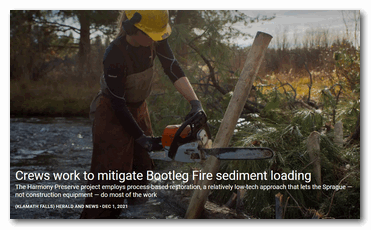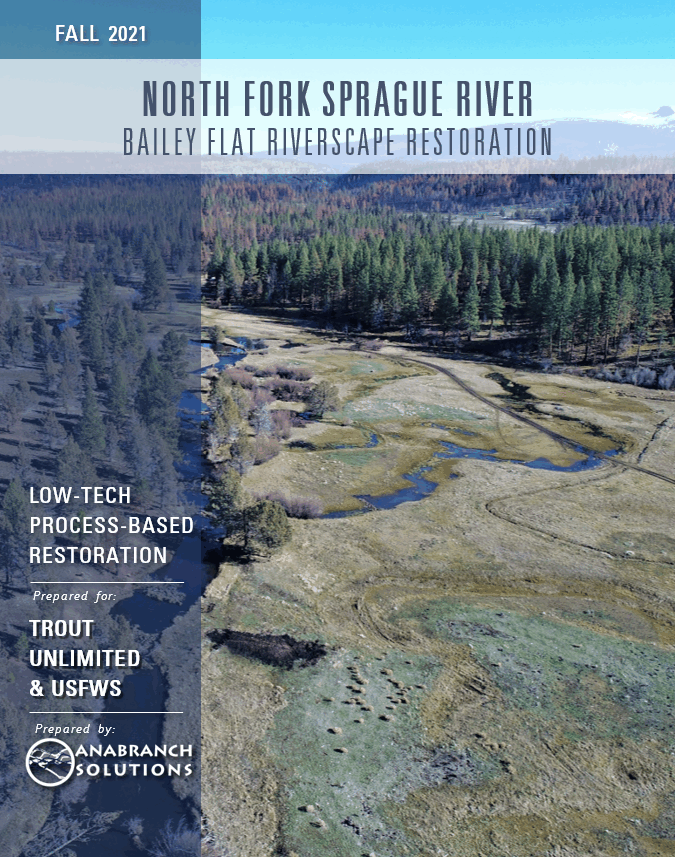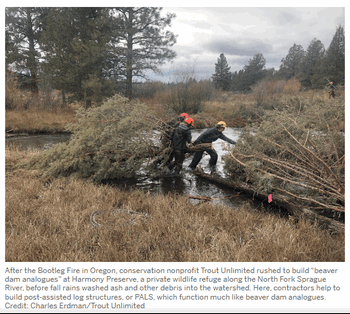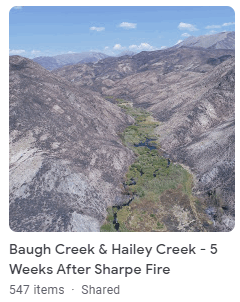Examples of LTPBR for Post Fire Recovery
North Fork Sprague River, Oregon → Bootleg Fire 2021
Crews work to mitigate Bootleg Fire sediment loading
The Harmony Preserve project uses process-based restoration — a low-tech approach that lets the Sprague, not construction equipment, do most of the work.
Project Information
This was an emergency restoration project after the Bootleg Fire in summer 2021. Meetings with landowners, USFWS and Trout Unlimited began in September 2021. Permitting and design were finished by November, and Anabranch Solutions with Swift Water Design finished construction by Thanksgiving.
Media Coverage
- Whitcomb, I. 2022. Beaver Dams Help Wildfire-Ravaged Ecosystems Recover Long after Flames Subside — Scientific American, February 7, 2022.
- Schwartz, 2021. Crews work to mitigate Bootleg Fire sediment loading — Klamath Falls Herald & News, Dec 1, 2021.
Project Tweets
Great article by @IsobelWhitcomb highlighting work done by beaver and #lowtechPBR with @TroutUnlimited, @USFWS, local partners and @AnabranchS in Southern Oregon. Beaver Dams Help Wildfire-Ravaged Ecosystems Recover Long after Flames Subside https://t.co/qrP7Drudnz via @sciam
— Joe Wheaton (@fluvialwheaton) February 10, 2022
Baugh Creek, Idaho → Sharps Fire 2018
The Sharps Fire, 2018 was a key moment, coming on the heels of a LTPBR Workshop in Hailey, Idaho.
Terry Gregory (IDFG) had translocated live beaver for decades to Baugh Creek to help with restoration. Their dam-building led to a resilient stream corridor that withstood the fire remarkably well.
Looking for photos? You can use any of the images in the Baugh Creek Album freely under a Creative Commons Attribution license.
Why is there an impressive patch of green in the middle of 65,000 acres of charcoal?
Turns out water doesn’t burn. Thank you beaver! More than just a #lowtechPBR tool... 🔥 resilience!



